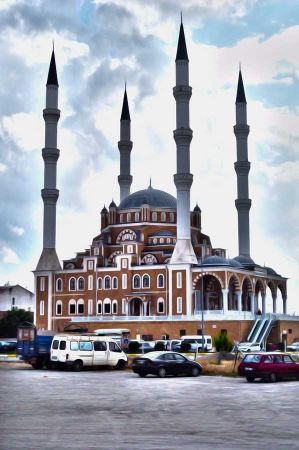Çorum - settlement region of the Hittites & Romans
- Written by Portal Editor
The Turkish city of Corum is located about 100 kilometers west of Amasya, a provincial capital with about 210,000 inhabitants, which belongs to the Black Sea region, although the coast is about 300 kilometers away.
The region around Corum has hardly appeared as a tourist attraction to this day, despite the long historical significance of the district, as the first settlements were established here as early as 5,000 - 3,000 BC. According to the excavations in Alacahöyük, Balımsultan köyü, Büyük Güllücek, Boğazkale, Eskiyapar, Hüseyindede and Kuşsaray, this region was technically and culturally well developed because of the large deposits of raw materials nearby.
Assyrians and Hittites were the first to settle
In the Bronze Age (3000–1000 BC) numerous settlements emerged in the region around Çorum. Around 2,000 BC, the Hattier settled, an ethnic group that engaged in lively trade with the Assyrians until they were more and more ousted by the Hittites. In the period from approx. 1950-1850 BC there were trade colonies of the Assyrians in this area. The Hittites ruled here from around 1650 to 1200 BC.
The most famous excavation site in the region is certainly Hattusa, the former capital of the Hittites, which is located near Boğazkale, about 90 kilometers from Corum. The important excavation site has been partially restored in the traditional style and today serves as an archaeological open-air museum with a building that shows the finds from Hattuša. Because of its importance, Hattuša was included in the UNESCO list of world cultural heritage.
Mention should also be made of the settlement hill near Alaca Höyük, about 60 kilometers from Corum, which was probably the former Zippalanda or Arinna, a place of worship of the Hittite sun goddess.
The Battle of Manzikert also changed the population structure

After Turkey was founded in 1923, Çorum became the provincial capital. The name "Çorum" is of Armenian origin and can be traced back to the 16th century in Ottoman documents. The time when the city was founded cannot be limited. It developed around the castle "Çorum Kalesi", which Evliya Çelebi describes as a Seljuk building. In the middle of the 16th century, four mahalles (neighborhoods) formed the interior of the castle.
After Turkey withdrew from the Central Powers, numerous foreigners were interned here in 1944/45.
The Çorum pogrom took place here in 1980, when Turkish right-wing extremists killed around 57 members of the Alevi minority.
As already mentioned, despite these important archaeological sites, the Corum region is hardly developed for tourism, so there are only a few good hotels and restaurants. Only gradually do tourists come to the provincial capital Corum after visiting Hattuša and Alaca Höyük.
The Archaeological Museum and its external impact
In the center of the city of Çorum, on a slight hill, there is a hospital built in 1914 with two corner projections, which will later be used as a school building and since 2003 as an archaeological museum. This is divided into an archaeological and an ethnographic section. While the latter part presents the history of popular culture in modern times, the first, designed according to modern criteria, is dedicated to the archaeological remains in the Çorum region: In numerous showcases, recent finds from the various excavation sites in the area are exhibited, in which cultures of Anatolia are exhibited. In the park in front of the museum there are stone objects from the Greco-Roman period, including sarcophagi and gravestones with inscriptions and pictorial representations as well as milestones of Roman emperors with Latin inscriptions, primarily from the 3rd century AD.
The Seljuk or Ottoman citadel of Çorum is located about 500 meters from the museum north of Cengiz Topel Caddesi.
Please read as well:
Weimar – a walk using lovely alley of pedestrian zone
Aquileia – youngsters learning to ring the bells
